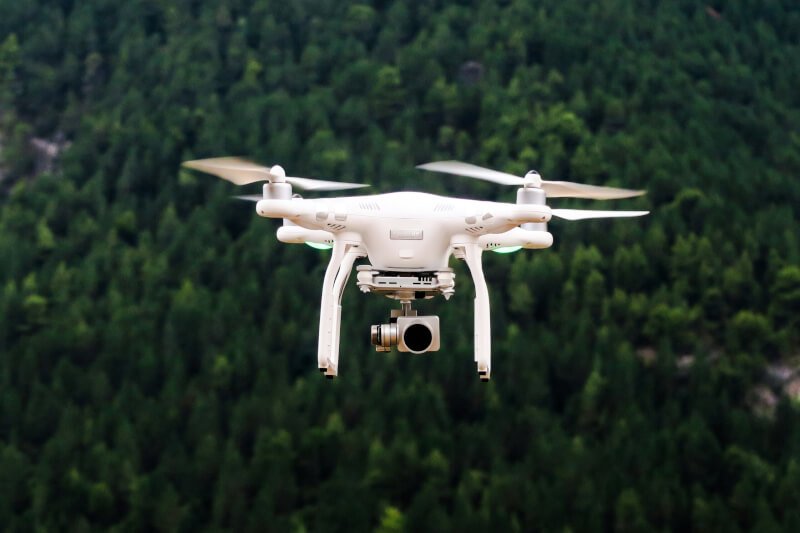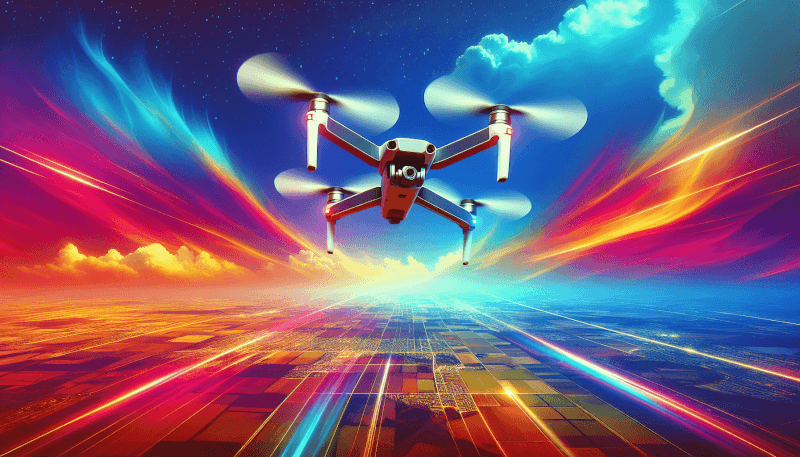Drone technology has revolutionized various industries, from photography and agriculture to transportation and delivery services. As the demand for drones continues to rise, so does the need for innovative research and development initiatives. In this article, we will explore some of the most popular drone technology research and development projects that are shaping the future of this exciting industry. So, buckle up and get ready to discover the groundbreaking advancements in drone technology!
NASA’s UAS Traffic Management (UTM) System
Collaborative Effort
NASA’s UAS Traffic Management (UTM) System is a collaborative effort between government agencies, industry leaders, and academic institutions. The goal of this initiative is to develop a framework for safely integrating drones into the National Airspace. By working together, these stakeholders are able to address the complex challenges associated with unmanned aircraft systems (UAS) operations.
Integration of Drones into the National Airspace
One of the primary objectives of the UTM System is to enable the safe integration of drones into the National Airspace. This involves developing technologies and protocols for managing drone traffic, including coordination between manned and unmanned aircraft. By establishing a reliable UTM infrastructure, drones can operate more efficiently and effectively, without posing a risk to other airspace users.
Beyond Line of Sight (BLOS) Operations
Another aspect of the UTM System is the development of technologies and procedures for Beyond Line of Sight (BLOS) operations. Currently, drones typically rely on a direct line of sight between the pilot and the aircraft. However, with advancements in technology and regulatory frameworks, there is a growing interest in allowing drones to operate beyond the pilot’s visual range. The UTM System aims to address the unique challenges associated with BLOS operations, such as communication, navigation, and collision avoidance.
Amazon Prime Air
Delivery Drones
Amazon Prime Air has been at the forefront of the drone delivery revolution. Their initiative aims to utilize drones to deliver packages directly to customers’ homes. By using autonomous drones, Amazon hopes to revolutionize the delivery industry by offering faster and more convenient service.
Autonomous Flight
A key factor in making the drone delivery system efficient and scalable is autonomous flight. Amazon Prime Air is developing technologies to enable drones to fly autonomously, without the need for constant human intervention. This includes advanced navigation systems, obstacle detection, and real-time decision-making capabilities.
Sense and Avoid Technology
To ensure the safety of their delivery drones, Amazon is investing in sense and avoid technology. This technology allows drones to detect and avoid obstacles in their flight path, such as buildings, trees, or other aircraft. By equipping their drones with this capability, Amazon aims to minimize the risk of collisions and ensure safe and reliable delivery.

Google’s Project Wing
Drone Delivery System
Google’s Project Wing is another initiative that aims to revolutionize the delivery industry through the use of drones. Their goal is to develop a drone delivery system that can transport goods quickly and efficiently.
Vertical Takeoff and Landing (VTOL)
Project Wing focuses on the development of drones with vertical takeoff and landing capabilities (VTOL). VTOL drones do not require a traditional runway for takeoff and landing, making them more versatile and adaptable for various environments.
Delivery Parachutes
One of the unique features of Project Wing’s drones is their use of delivery parachutes. This allows the drones to drop packages from the sky, providing a safe and accurate delivery method for even the most challenging locations.
Facebook’s Aquila
Internet Connectivity
Facebook’s Aquila project aims to provide internet connectivity to remote and underserved areas through the use of solar-powered drones. These drones can stay airborne for extended periods, beaming internet signals to the ground and bringing connectivity to areas that currently lack reliable access.
Solar-Powered Drones
A key aspect of Aquila is the use of solar power to keep the drones airborne. These drones are equipped with solar panels that charge during the day, allowing them to operate throughout the night. This renewable energy source enables long-duration flights and reduces the need for frequent refueling or recharging.
Communications Infrastructure
In addition to providing internet connectivity, Aquila drones also serve as a communications infrastructure. By establishing a network of drones, Facebook aims to extend the reach of existing communication systems, providing a lifeline during emergencies and enabling communication in remote areas.

DJI’s Zenmuse X7 Camera
High-End Aerial Cinematography
DJI’s Zenmuse X7 camera is targeted towards professional aerial cinematographers. This high-end camera is designed to capture cinematic footage from the sky, offering filmmakers and videographers a new perspective for their creative projects.
Super 35 Sensor
The Zenmuse X7 features a Super 35 sensor, which is larger than what is typically found in consumer-grade cameras. This larger sensor captures more light and provides improved dynamic range and low-light performance, resulting in stunning image quality.
Interchangeable Lens System
To cater to different shooting requirements, the Zenmuse X7 camera offers an interchangeable lens system. This allows cinematographers to choose the best lens for their specific needs, whether it’s capturing wide-angle shots, telephoto zoom, or cinematic depth of field.
Intel Shooting Star Drones
Synchronized Light Shows
Intel Shooting Star drones have gained popularity for their dazzling synchronized light shows. These drones can be programmed to fly in formation and produce intricate aerial displays, creating stunning visual spectacles for entertainment events and celebrations.
Intel Drone Light Show Software
To coordinate the flight patterns and lighting effects of multiple drones, Intel has developed specialized drone light show software. This software enables the creation of complex choreographies, synchronization of movements, and precise control over each drone’s lighting, resulting in mesmerizing displays.
Indoor Drone Flyability
Unlike many other drones designed for outdoor use, Intel Shooting Star drones are designed to be able to fly safely indoors. This opens up opportunities for indoor light shows and performances, expanding the possibilities for entertainment and artistic expression.

Airware’s Aerial Information Platform
Industrial Drone Operations
Airware’s Aerial Information Platform focuses on providing solutions for industrial drone operations. This includes industries such as construction, mining, agriculture, and oil and gas, where drones can be used for inspections, mapping, and data collection.
Data Analytics
One of the key features of the Aerial Information Platform is its data analytics capabilities. Airware’s software can process and analyze the data collected by drones, providing valuable insights and actionable information for businesses. This allows companies to make data-driven decisions and optimize their operations.
Regulatory Compliance
Airware also places a strong emphasis on regulatory compliance. As drones become increasingly integrated into various industries, it is crucial to ensure that operations comply with relevant regulations and safety standards. Airware’s platform includes features that help businesses adhere to these requirements and manage their drone operations effectively.
Hyundai’s Elevate
Ultimate Mobility Vehicle (UMV)
Hyundai’s Elevate is a concept for an Ultimate Mobility Vehicle (UMV), combining the capabilities of a car and a drone. The UMV aims to provide a versatile transportation solution for challenging terrains and emergency situations.
Modular Electric Drone Concept
The Elevate UMV concept features a modular electric drone concept. This means that the vehicle can transform into a quadcopter-style drone when needed, allowing it to navigate difficult terrains or bypass obstacles on the ground. This capability offers a new level of mobility and adaptability.
Enhanced Terrain Capability
The Elevate UMV is designed to overcome various terrains, including rough or impassable areas. Its adaptive suspension, robotic leg architecture, and all-wheel drive capability enable it to traverse obstacles such as rocks, rubble, and even stairs. This enhanced terrain capability makes the Elevate UMV a potential game-changer in emergency response, search and rescue, and off-road transportation.

Drone Racing League (DRL)
Professional Drone Racing
The Drone Racing League (DRL) is an initiative that has popularized the sport of drone racing. The DRL organizes professional racing events where pilots compete using custom-built racing drones.
First-Person View (FPV)
Drone racing is unique in that pilots navigate their drones through a first-person view (FPV). Pilots wear FPV goggles that provide a live feed from their drone’s onboard camera, giving them a real-time perspective as they navigate through challenging race courses at high speeds.
Custom-Built Racing Drones
The DRL places a strong emphasis on the development of custom-built racing drones. These drones are specifically designed for speed, agility, and durability, allowing pilots to push the limits of aerial performance. The DRL’s focus on innovation and technology has contributed to the growth and popularity of drone racing as a sport.
Lockheed Martin’s Indago
Small Unmanned Aerial System
Lockheed Martin’s Indago is a small unmanned aerial system (UAS) designed for military and civil applications. This versatile drone is equipped with advanced capabilities, making it suitable for various missions, including reconnaissance, surveillance, and search and rescue.
Military and Civil Applications
The Indago drone serves both military and civil applications. In military operations, it can be deployed for intelligence gathering, target identification, and situational awareness. In civil applications, it can assist in disaster response, mapping, and inspection tasks. Its compact size and portability make it a valuable tool in a wide range of scenarios.
Long-Endurance Operations
One of the key advantages of the Indago drone is its long-endurance capabilities. It can fly for extended periods, providing operators with valuable aerial intelligence over an extended range. This endurance allows the Indago to support critical operations and provide real-time information in time-sensitive situations.
In conclusion, these drone technology research and development initiatives showcase the wide range of applications and advancements within the drone industry. From delivery drones revolutionizing logistics to high-end cameras capturing stunning aerial cinematography, these initiatives are shaping the future of drones. With continuous technological advancements and collaboration amongst various stakeholders, the potential of drones is limitless. Whether it’s enhancing industrial operations, expanding connectivity, or providing entertainment and sport, drones are proving to be invaluable tools in various sectors. As these initiatives continue to evolve, we can expect further innovation and integration of drones into our daily lives.



